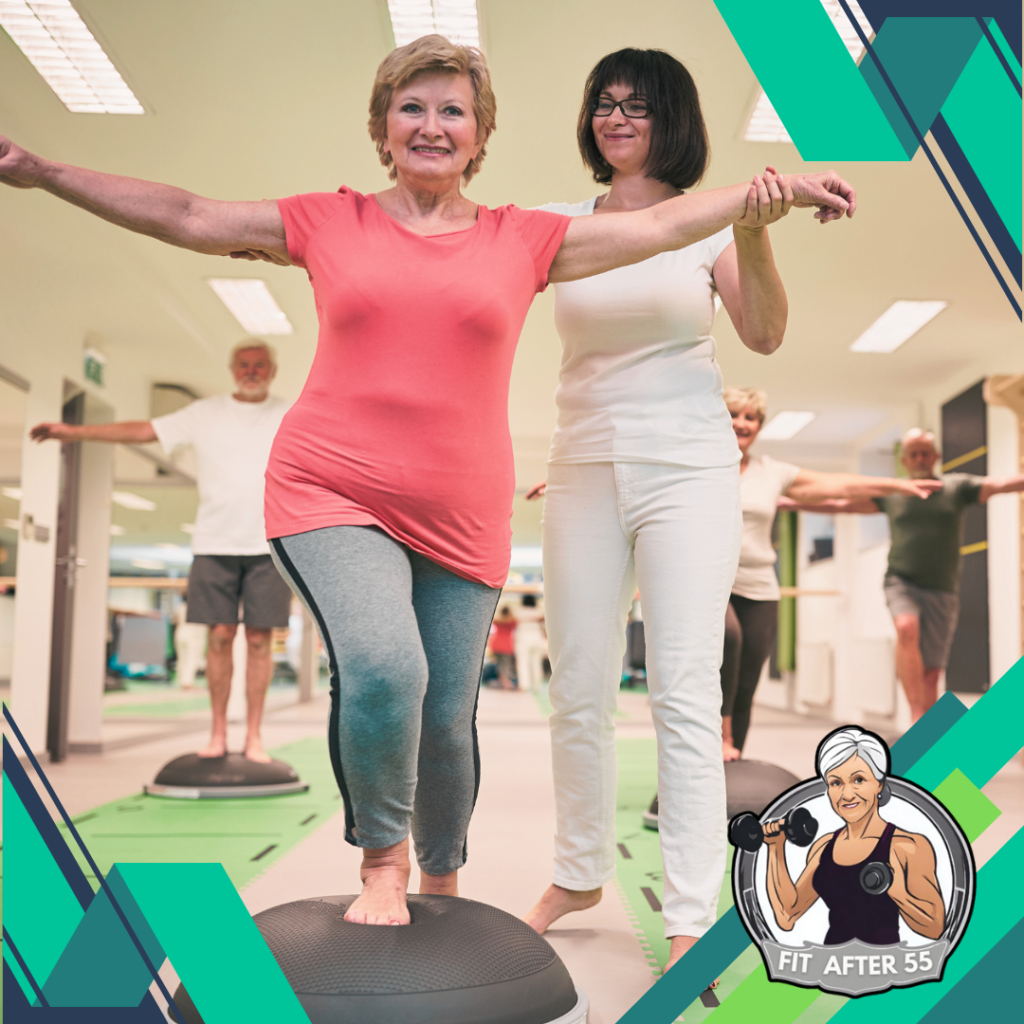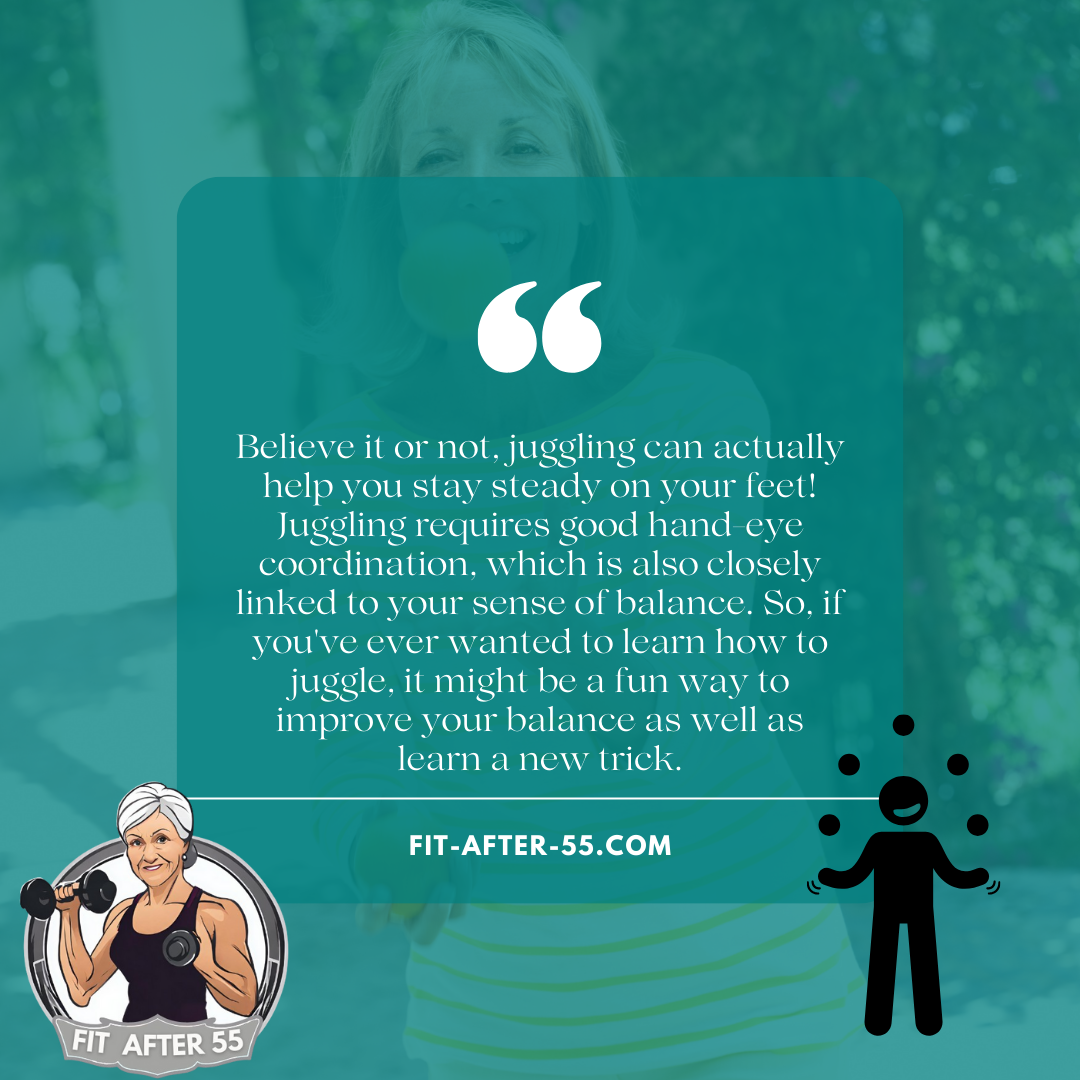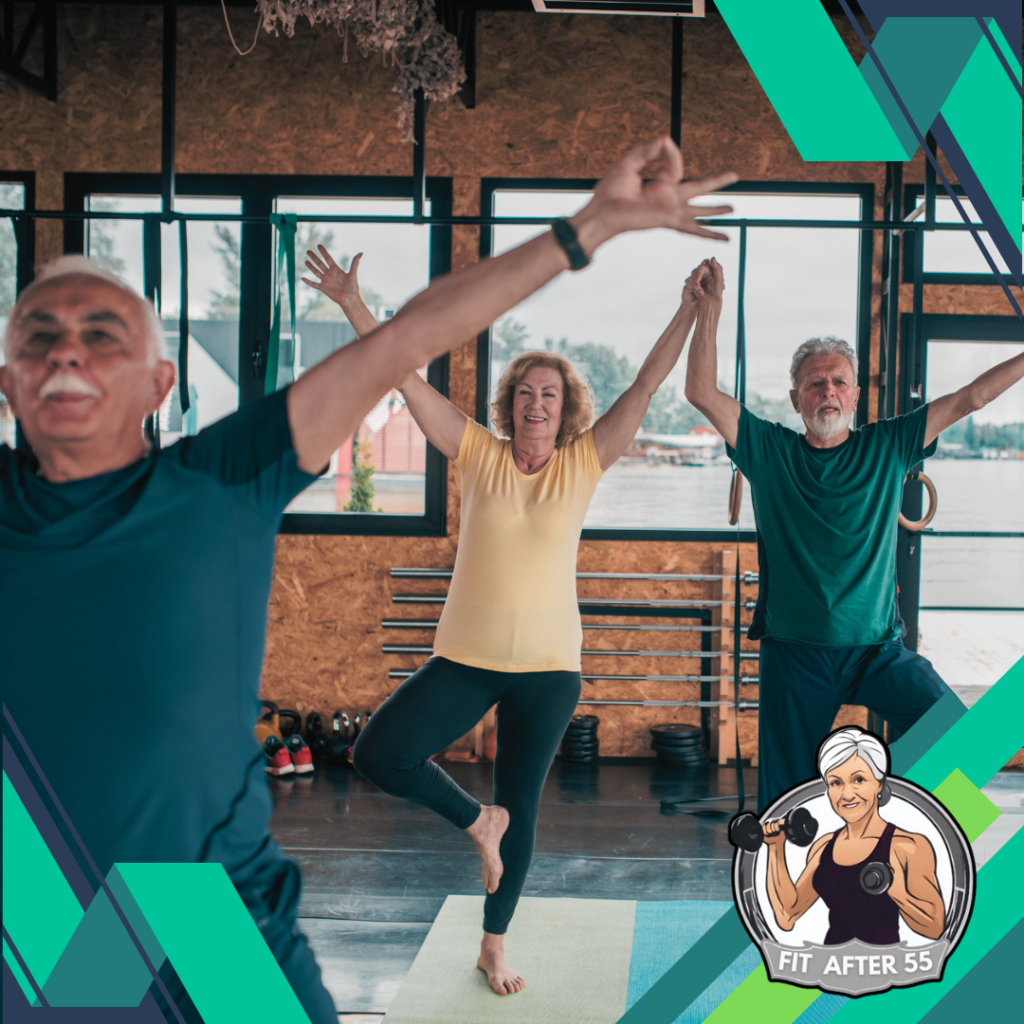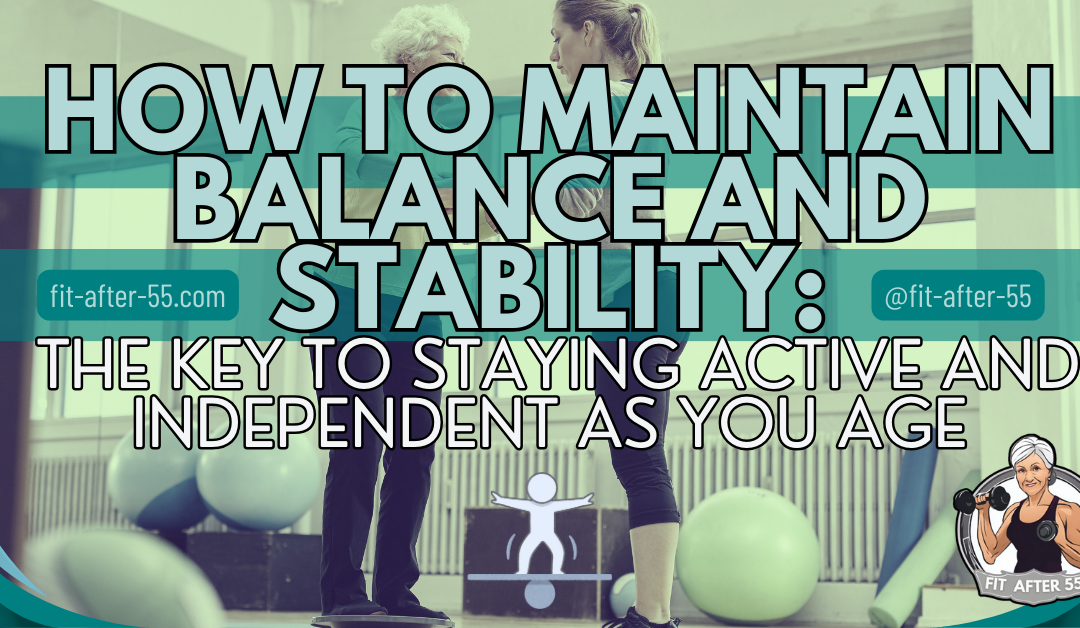How to maintain balance and stability? It’s not just about mastering a yoga pose (although that’s pretty cool too). As we age, keeping ourselves steady on our feet becomes crucial for staying active and independent. But fear not! This article is your guide to navigating the intricacies of balance, from understanding the why to the how. Let’s dive in and ensure your golden years sparkle with confidence and adventure!
How to Maintain Balance and Stability: The Key to Staying Active and Independent as You Age

Aging gracefully isn’t just about looking good, it’s also about feeling stable and secure on your feet. As we age, it’s natural to notice that our balance and stability aren’t quite what they used to be. But why is that? It all comes down to changes in our bodies that can affect our balance system – from the inner ear to muscle strength.
Maintaining balance is crucial, not just for performing daily activities with ease but also for preventing falls, which can lead to serious injuries. I’m here to help you understand that this isn’t just about being careful; it’s about actively working to preserve your balance and, in turn, your independence and quality of life.

In my opinion, we should pay more attention to our balance as we get older. It’s a vital aspect of our health that doesn’t always get the spotlight it deserves. Focusing on improving and maintaining your balance can have a significant impact on enjoying your later years.
You might be thinking: well, what specifically causes these changes in balance with age? Stay tuned, because that’s exactly what we’re going to delve into next. I’ll take you through the intricacies of the body’s balance system, the impact of aging on this delicate system, and practical advice on how to combat those changes. This knowledge is your first step towards a steadier, more confident future.
Key Takeaways
- Recognize age-related changes in balance and actively work to counteract them.
- Practice simple exercises like standing on one foot and heel-to-toe walking regularly.
- Ensure proper nutrition and make home safety adjustments to support stability.
Understanding the Factors Affecting Balance

I’m going to walk you through the intricate system that keeps you upright. Imagine your body like a high-tech tower with sensors and controls working tirelessly to keep it from toppling. Your balance is managed by a complex combination of your vision, your inner ear, and proprioception, which is your body’s sense of position in space.
Age-Related Challenges to Balance
Age can play a bit of a spoil-sport here. Your vision might not be as sharp, your inner ear structures could start to show some wear and tear, and your muscles and joints might not report back to your brain as crisply as they used to. This means your internal balance control center isn’t getting the same quality information, making it harder to keep you steady.
Additional Factors Affecting Balance
That’s not all, though. Chronic conditions like diabetes, arthritis, or hypertension also get in on the act. They often bring along pals like numbness in the feet or dizziness, which can throw you off your game. And if we’re talking about medications, some can have side effects that feel like you’re trying to walk on a boat in choppy waters.

The Power of Knowledge: Taking Control
Now, before you start thinking this is all doom and gloom, remember that knowledge is power. Understanding these factors is the first step in counteracting them. You can always adjust your approach down the road, and in the next part, we’re going to talk about key exercises that can help fortify your body’s balancing acts.
Key Balance-Enhancing Exercises

Maintaining good balance requires regular activity and targeted exercise. So, what are these exercises, and how do you start? First, it’s about simple moves that can have a big impact. Think beyond just walking; we’re talking about specific exercises that target your muscles and your mind’s ability to maintain your body’s stability.
Balance Exercises
Here’s a table summarizing some easy balance exercises you can do:
| Exercise | Description |
|---|---|
| Standing on one foot | Hold yourself up on one leg for as long as you can. Aim for 30 seconds and repeat on the other leg. |
| Heel-to-toe walking | Walk heel-to-toe, placing your heel of one foot directly in front of the toes of the other foot. |
| Leg lifts | Sit on a chair and lift one leg out straight in front of you, keeping it parallel to the floor. Hold for a few seconds, then lower and repeat with the other leg. |
| Sitting down and standing up from a chair without using hands | Use your core muscles to lower yourself into a chair and then stand up without using your hands on the arms of the chair. |
In the next section, we’ll explore another cornerstone of maintaining balance as you age: nutrition. Just as your car runs better with the right type of fuel, your body’s balance system thrives on specific nutrients that support musculoskeletal health.
Nutritional Support for Musculoskeletal Health

When you’re aiming to keep your balance strong, it’s not just about what you do with your body; it’s also about what you put into it. What we eat plays a crucial role in maintaining musculoskeletal health which, in turn, supports our stability and balance.
Dietary Tips for Fall Prevention
This table summarizes some key dietary tips to keep your bones strong, muscles functioning well, and stay hydrated to prevent falls:
| Nutrient | Importance | Food Sources |
|---|---|---|
| Calcium & Vitamin D | Maintain bone density | Dairy products, leafy greens, fortified foods (calcium); Sunlight exposure, fatty fish, supplements (vitamin D) |
| Protein | Maintain muscle strength | Lean meats, beans, nuts |
| Hydration | Prevent dizziness and low blood pressure | Water, fruits (infused water), herbal teas |
| Potassium & Magnesium | Support nerve and muscle function | Bananas, avocados, dark chocolate |
Note: Consult your healthcare professional before making significant dietary changes.
With your nutrition on track, you’re setting the stage for a stronger, more stable you. But there’s more to the story. In the next section, we’ll delve into how you can adapt your living space and explore assistive devices that can provide additional support for maintaining balance and stability as you age.
Lifestyle Adjustments and Assistive Devices
Congratulations on making it to this section, where you’re going to learn about fine-tuning your surroundings and possibly incorporating some helpful tools to keep you steady on your feet. In the quest for stability as you age, sometimes a tweak in your living space or a nifty device can make a significant impact.
Home Safety for Stability
Let’s talk home safety first. I’m here to help you with identifying trip hazards, suggesting optimal lighting, and smart furniture arrangement. The goal is to create an environment that supports you, quite literally, every step of the way.
Assistive Devices for Confidence and Mobility
Now what about assistive devices? Whether it’s a cane, walker, or something else, there’s a world of options out there designed to give you that extra bit of support. These aren’t just functional; they can be stylish too! They’re not a sign of weakness; they’re a smart strategy for keeping your independence.
Consulting a Professional for Personalized Support
You can always consult with a physical therapist or an occupational therapist to find the best options tailored to your needs. Remember, the choices you make for your lifestyle should boost your confidence and maintain your mobility.
Keeping Your Balance Fun and Engaging: How to Make Maintaining Balance and Stability Enjoyable

Let’s face it, sticking with an exercise routine, especially one focused on balance, can feel like a chore. But here’s the good news: maintaining balance and stability doesn’t have to be a drag! Here are some tips to infuse fun and engagement into your activities, all while keeping yourself steady on your feet:
-
Turn it social! Grab a friend or family member and make your balance exercises a game. Challenge each other, laugh together, and hold each other accountable. You’ll be surprised at how quickly the time flies when you’re having fun.
-
Embrace the tech world! There’s a whole universe of video games and apps designed to challenge your balance and coordination. Explore these options and find one that keeps you entertained while you improve your stability.
-
Take it outside! Practice your balance exercises while you’re gardening, walking on different terrains (think grass, sand, or even gravel), or even dancing in the park. Nature provides a refreshing backdrop and can make exercise feel less like a chore. Bonus points if you can find a scenic spot to enjoy while you work on your balance!
-
Music to your ears (and your balance)! Put on your favorite tunes and turn your balance routine into a mini dance party! Moving to the rhythm can boost your mood and make the exercises more enjoyable. You might even surprise yourself with some new moves.
-
Track your progress! Seeing improvement is a powerful motivator. Keep a log of your balance exercises, noting the duration and difficulty. Celebrate your milestones and adjust the exercises as you get stronger. You’ll be amazed at how far you’ve come!
By incorporating these tips, you can transform your balance routine from a duty to a delightful activity that keeps you engaged and motivated in the long run. Remember, maintaining balance and stability is key to staying active and independent as we age, so why not make it fun while you’re at it?
How to Maintain Balance and Stability: Taking Charge of Your Golden Years

We’ve explored a lot of ground in this article, haven’t we? We talked about the importance of balance for staying active and independent, especially as we age. We delved into the reasons why balance can decline, from natural changes in our bodies to external factors like medications.
The good news is, we’re not powerless! We can actively work to improve and maintain our balance through targeted exercises, proper nutrition, and smart lifestyle adjustments. From incorporating balance-boosting exercises into your routine to fortifying your diet with bone-strengthening nutrients and staying hydrated, you have the tools to create a strong foundation for stability.
Finally, we explored how to optimize your living environment for safety and looked at assistive devices that can provide additional support. Remember, using a cane or walker isn’t a sign of weakness; it’s a sign of taking charge of your well-being and prioritizing your independence.
Thank you for joining me on this journey towards a steadier, more confident you. I wish you all the best in your fitness journey! May your golden years be filled with vibrant health and a continued sense of adventure.
Frequently Asked Questions
I'm worried about falling, what are some simple exercises I can do at home to improve my balance?
Try heel-to-toe walking, standing on one leg for 30 seconds (each side), or sitting down and standing up from a chair without using your hands.
Besides exercise, is there anything else I can do in my daily routine to stay steady on my feet?
Make sure your home is well-lit and free of tripping hazards. Consider supportive shoes and staying hydrated to avoid dizziness.
When is a good idea to consider using a cane or walker?
If you feel unsteady on your feet, even with home modifications, a cane or walker can boost your confidence and safety. Talk to your doctor for a personalized recommendation.
Unlock Your Best Self with Fit After 55!
Dive into a world of wellness tailored for those 55 and beyond. Our official website offers inspiring articles, expert product reviews, and a community that shares your passion for fitness. Join the conversation and stay motivated on our Facebook page. Embrace vitality and joy with Fit After 55!

